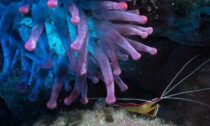
For the first time, United Nations members have agreed on a unified treaty to protect biodiversity in the high seas, representing a turning point in a years long effort to bestow order on vast stretches of the planet where conservation has previously been hampered by a confusing patchwork of laws. The U.N. Convention on the Law of the Sea came into force in 1994, before marine biodiversity was a well-established concept. The treaty agreement concluded two weeks of talks in New York.
An updated framework to protect marine life in the regions outside national boundary waters, known as the high seas, had been in discussions for more than 20 years, but previous efforts to reach an agreement had repeatedly stalled...
Read More







Social Profiles